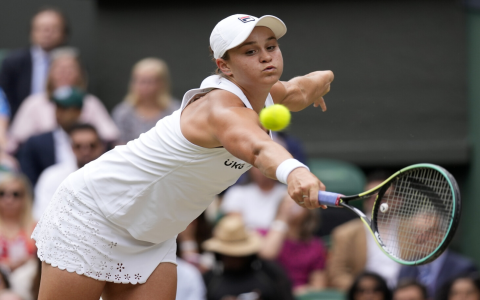Karolína Plíšková has always been a formidable presence on the WTA circuit, known for her powerful serve and fierce baseline game. Recently, she faced a pivotal moment in her career during the 2023 US Open. Here, she reached the quarterfinals, showcasing her incredible skill and resilience. However, her loss to Jelena Ostapenko brought mixed feelings; it illuminated both her potential and the challenges she faces moving forward.
In the quarterfinal match, Plíšková displayed her trademark aggressive play. She opened the match strongly, taking an early lead. Yet, Ostapenko’s relentless energy and counter-attacking style proved a tough matchup. As the match progressed, Plíšková struggled to maintain her form under pressure. “I felt good at the beginning, but then I let her dictate the points,” she later admitted, pointing to a critical shift in momentum. Understanding these shifts is essential for Plíšková. While her serve remains one of her greatest weapons, inconsistency in her return game often leaves her vulnerable against high-performing opponents.
To fully appreciate Plíšková’s current standing, it’s vital to recognize her historical context. Once ranked as high as number one in the world, her career has seen notable highs and lows. During her peak years, her success was often attributed to her formidable serve, strong forehand, and relentless determination. However, she struggled to consistently make deep runs in Grand Slams, raising questions among fans and analysts about her mental fortitude in crucial moments.
The 2023 season highlighted broader trends in women’s tennis, particularly the rise of younger players like Coco Gauff and Maria Sakkari. These players not only match Plíšková’s power but also display a higher level of agility and tactical awareness. Just after her match, Plíšková noted, “Tennis is evolving. Younger players bring a different dynamic.” This statement encapsulates the challenges veteran players like herself face in keeping up with an ever-evolving game.
The match against Ostapenko also revealed deeper insights into her psyche. Plíšková’s confidence wavered as errors crept into her game, a phenomenon she has experienced in high-pressure situations before. This raised questions about whether she could reclaim her position among the elite. In a candid moment, she expressed, “I know I need to work on my mental game,” highlighting her self-awareness and willingness to adapt.
What Lies Ahead for Plíšková?
Looking beyond the US Open, Plíšková has the opportunity to regroup and refine her strategies. The upcoming 2024 season could serve as a significant turning point. Her focus will likely be on improving her return and tackling the psychological aspects that hinder her performance during critical matches. As she reflects on her career, she aims to blend experience with newfound strategies. This blend might just reignite her trajectory in the sport.
Plíšková’s resilient spirit is evident in her training regimen as she prepares for future tournaments. “Every match teaches me something. It’s about growth,” she remarked, emphasizing a forward-looking mindset. Should she embrace this growth, the tennis community may witness a return to her formidable form.
As fans and analysts look forward, they must ponder: Can Plíšková adapt her game to reclaim a top-ranking position? With her determination and skill, the possibility remains. Her journey serves as a reminder that resilience, technique, and mental strength are all critical in professional sports.
In conclusion, while Karolína Plíšková may have stumbled at the US Open, her career is far from over. The experience gained from such matches could be the catalyst for a spectacular comeback. What do you think? Does Plíšková have what it takes to evolve and compete with the younger generation of players? Share your thoughts in the comments below!















